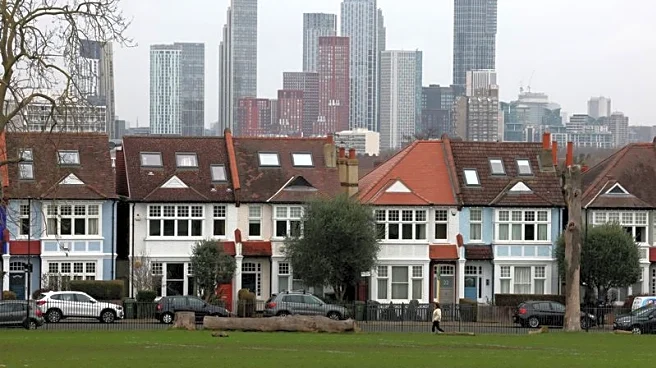What's Happening?
A recent review by Stormont has concluded that the installation of Irish language signage at Belfast's Grand Central Station does not detract from the use of English. This assessment is part of an 'equality screening' process conducted by the infrastructure
minister, following a legal dispute involving Sinn Féin's Liz Kimmins and unionist politicians. The review found that while the bilingual signage could have minor positive and negative impacts on different groups, it does not infringe on the rights of those with a British identity under the Good Friday Agreement. The proposal to install the signage, costing approximately £150,000, was initially announced in March but faced legal challenges from loyalist activist Jamie Bryson, who argued that the decision should have been agreed upon by the Northern Ireland Executive.
Why It's Important?
The decision to install Irish language signage at a major public transport hub like Grand Central Station is significant in the context of Northern Ireland's cultural and political landscape. The use of the Irish language has been a contentious issue, with some viewing it as a symbol of cultural identity and others as a tool of cultural dominance. The review's findings that the signage does not diminish English or British identity rights could help ease tensions and promote inclusivity. This development is crucial for fostering good relations and equality of opportunity, as mandated by legal requirements in Northern Ireland. The outcome of this review may influence future decisions on bilingual signage and cultural representation in public spaces.
What's Next?
Following the review, the next steps involve addressing the legal challenges and potentially moving forward with the installation of the signage. The decision may prompt further discussions among political leaders and community groups about the role of the Irish language in public life. The outcome could set a precedent for similar initiatives across Northern Ireland, impacting how cultural and linguistic diversity is managed in public policy. Stakeholders, including political parties and civil society groups, will likely continue to engage in dialogue to ensure that such initiatives align with broader goals of equality and good relations.














